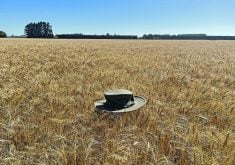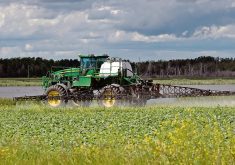Five years post-amalgamation, the Manitoba Crop Alliance is well established, according to chief executive officer Pam de Rocquigny.
Now, the multi-commodity farm group’s new strategic plan is looking to future opportunities.
“We’re ready to build on that strong foundation … where can we now move the needle?” de Rocquigny said.
The MCA’s first strategic plan, released in 2022, was about delivering on what it had promised to members when they chose to amalgamate, she said.
The new plan is the first not put out under pandemic conditions.
Read Also

U.S. bill could keep out Canadian truckers
The Protecting America’s Roads Act, which was tabled in the U.S. House of Representatives at the beginning of October, would “rid the country of illegal immigrant commercial truck drivers and ineligible foreign nationals.”
Canada plunged into lockdowns only weeks after members voted to amalgamate, de Rocquigny noted. That made it difficult to decipher what a normal budget for the organization should look like or what forward-thinking strategies should be during the early days of the MCA.
The 2024-27 plan was released at the beginning of May. The document laid out three overarching goals and nine “step goals” to be accomplished in the first year and/or renewed once the calendar ticks over. Each small goal includes metrics so that the MCA can demonstrate what it has accomplished to farmer members, de Rocquigny said.
The first big goal is to innovate MCA’s communication program to increase awareness and engagement with members. First-year goals include audience research and identifying strategic communication initiatives.
MCA’s directors and crop committee delegates wanted to ensure their communications are hitting the mark, de Rocquigny said. With 7,700 members, some farmers may not know much about the MCA or what it does with farmer checkoff dollars.
The second big goal revolves around research. Research and development is the MCA’s biggest budget item. It has set a good foundation with its Whole Farm Research and Research on the Farm programs, de Rogquigny said. It wants to continue funding research that will solve problems farmers are facing and that will meet the needs of those growing smaller crops that don’t get as much research attention.
This includes a step goal of developing partnerships across the border.
Organizations like North Dakota State University might be able to expand Manitoban farmers’ pool of knowledge, particularly on crops like corn, de Rocquigny noted.
The third big goal is to explore areas for investment “that unlocks hidden potential and fuels historic progress.”
This includes a study on potential value-added initiatives, increasing support to consumer outreach programs and speaking with research and development partners to capture opportunities the MCA may have missed.


















